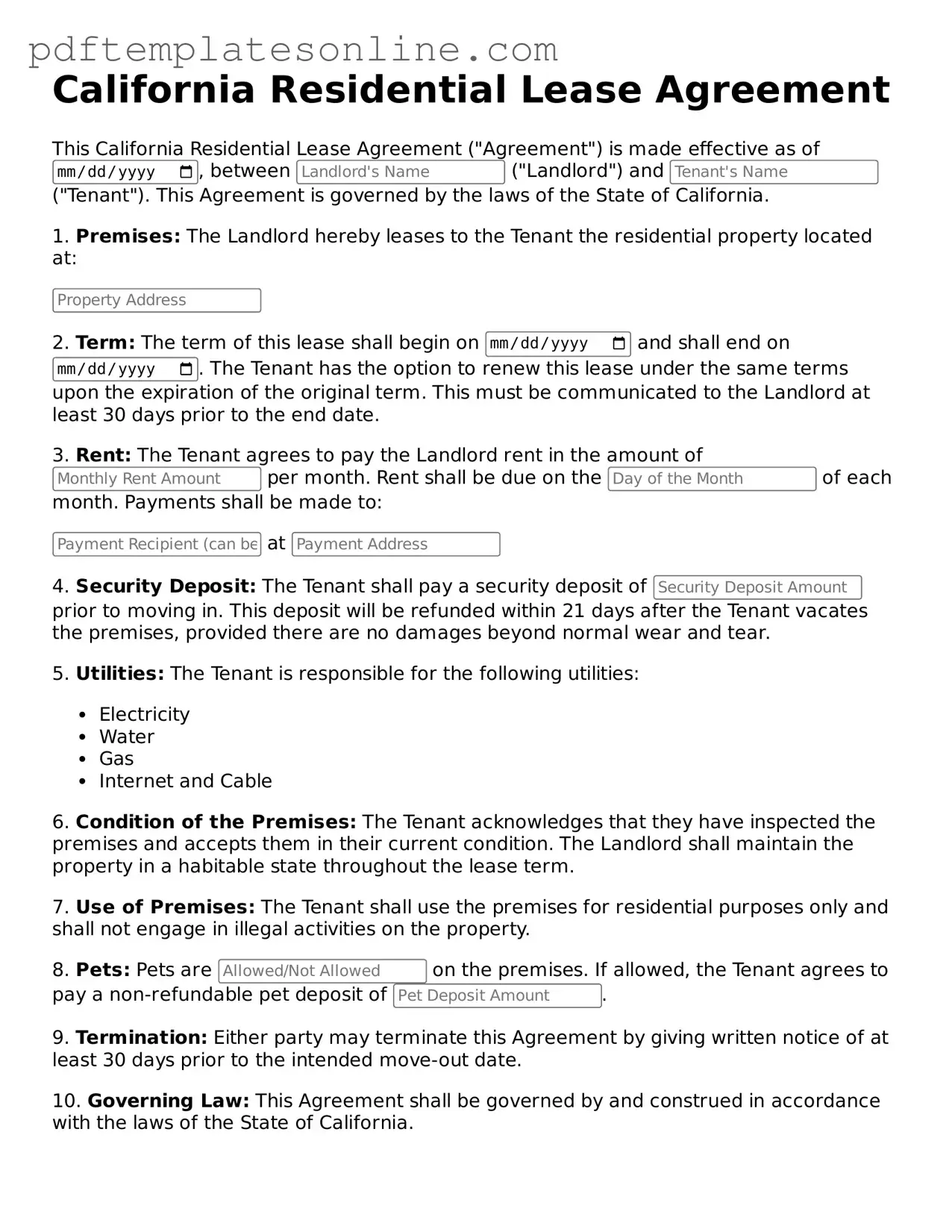When filling out the California Residential Lease Agreement form, many individuals make common mistakes that can lead to confusion or disputes later on. One frequent error is failing to include all required tenant and landlord information. Each party's full name and contact details should be clearly listed to avoid any ambiguity.
Another mistake often made is neglecting to specify the lease term. It is essential to indicate the start and end dates of the lease. Without this information, both parties may have different interpretations of the agreement duration.
Some people forget to outline the rental payment details. This includes the amount due, the due date, and acceptable payment methods. Clearly stating these terms helps prevent misunderstandings regarding rent payments.
Inadequate descriptions of the rental property can also be a problem. The address should be complete and accurate, including any unit numbers if applicable. This ensures that both parties are aware of the exact location being rented.
Additionally, many individuals overlook the importance of including any additional fees or deposits. Security deposits, pet fees, and maintenance costs should be clearly defined to avoid disputes later.
Another common error is not addressing maintenance responsibilities. It is important to specify who is responsible for repairs and upkeep of the property. This helps set clear expectations for both the landlord and tenant.
Some individuals may also fail to review the terms regarding early termination of the lease. Including conditions for breaking the lease early can provide clarity and protect both parties in case of unforeseen circumstances.
Finally, not signing and dating the agreement is a crucial mistake. Both parties must sign the document to make it legally binding. Without signatures, the lease may not hold up in a legal context.
